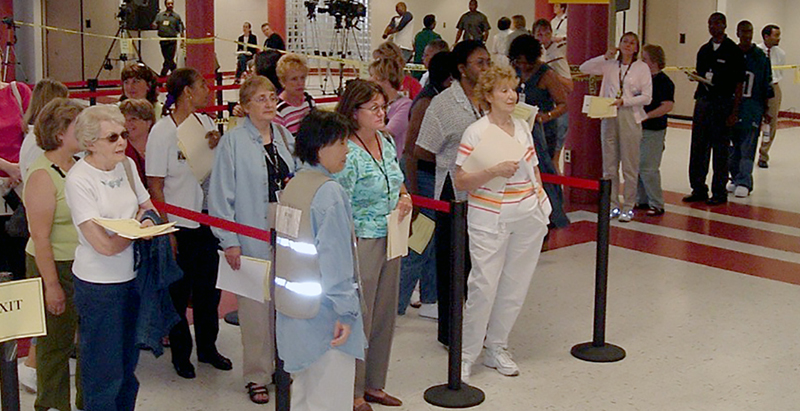
|
 |
The clinic planning models were tested extensively in live drill scenarios. |
|
As federal, state and local officials scramble to set up emergency medical clinics to deal with the COVID-19 pandemic, the University of Maryland is offering free software tools and other resources to help model and design these clinics for more efficient and effective processing under high demand.
The helpful resources are the product of research conducted from 2005–2013 by Professor Jeffrey W. Herrmann (ME/ISR), an operations research expert who worked extensively with the U.S. Centers for Disease Control and Prevention (CDC); the National Association of County and City Health Officials (NACCHO), and public health officials from the Montgomery County, Md., government.
Specifically, Herrmann and his colleagues created mathematical and simulation models of mass dispensing and vaccination clinics (also known as points of dispensing or PODs). They also developed decision support tools to help emergency preparedness planners design clinics that have enough capacity to serve residents quickly while avoiding unnecessary congestion.
The clinic planning software--available at no charge--includes:
Although originally designed for earlier scenarios such as the H1N1 flu, the principles behind the models and support tools are applicable to the emergency clinics being set up to test and triage patients in the COVID-19 pandemic.
A poor clinic design has insufficient capacity and long lines of patients waiting for vaccinations or other services such as testing and triage. More patients require more space as they wait to receive treatment.
“When public health officials are planning mass testing or mass vaccination to fight COVID-19, they can use these mathematical models and computer simulations to help them design operations and facilities that have enough capacity so that residents don’t have to wait very long,” says Professor Herrmann. “That will reduce the number of people and help maintain social distancing.”
“Poor planning and not having enough staff can lead to long lines and confusion,” Herrmann notes. If too many patients are in the clinic, they cause congestion, crowding, confusion, and the potential spread of disease. Herrmann's models and support tools help planners design clinics that have better patient flow and are able to process people more quickly and efficiently.
"These models can be constructed quickly and are easy to use,” Herrmann says. “The models can use estimates from existing activities or data from exercises that are used for training staff.”
The Institute for Systems Research within the A. James Clark School of Engineering has created an online resource that offers Dr. Herrmann’s free software tools and summarizes his research. In addition to the downloadable tools, it includes:
- Links to Dr. Herrmann’s publications and presentations
- Video and audio links of Dr. Herrmann explaining the research project
- Links to public health preparedness models from various other sources, including the U.S. Centers for Disease Control and Prevention
“There are many behind-the-scenes activities that support testing or vaccinating residents, and those operations, such as supply logistics, security, and data processing, have to be planned carefully as well,” Herrmann concludes. “Using models can help public health professionals make better decisions and reduce risk.”
Related Articles:
ISR faculty leading, playing key roles in ARL cooperative agreement
New Markov chain predictive model aids COVID-19 decisionmakers
When does a package delivery company benefit from having two people in the truck?
Michael Fu receives INFORMS George E. Kimball Medal
'OysterNet' + underwater robots will aid in accurate oyster count
Michael Fu part of $1M NSF grant to model, disrupt illicit kidney trafficking networks
NEXTOR III research helping general aviation airports track usage
ArtIAMAS cooperative agreement receives $10.3M in second-year funding
NEXTOR aviation operations research uses machine learning to model system delay and predict high flight delay days
Michael Fu part of NSF project to improve kidney transplant access and decision-making
March 27, 2020
|

